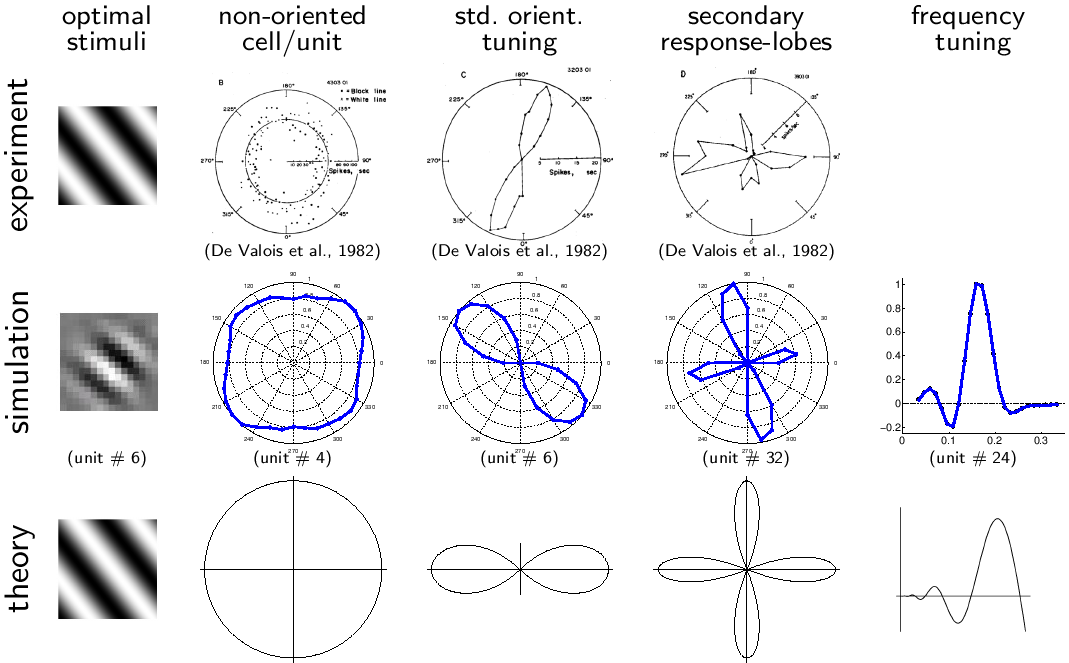
In the project SFA yields complex cell properties we have shown that SFA applied to quasi-natural image sequences yields quadratic functions that share many properties with physiological complex cells in primary visual cortex. Interestingly, the results do not depend on the natural images. If one uses colored noise images, which look like clouds in the sky, one gets the same results. This means that the conditions under which we get complex cell receptive fields can all be formulated analytically: (i) take colored noise images, (ii) generate little movies from them by rotation, translation, and zoom, (iii) rescale all frames of the movies to 16x16 pixels, (iv) apply slow feature analysis (SFA) with quadratic functions, (v) use the resulting quadratic functions as complex cell receptive fields and analyze them - done. As a consequence, one could hope to also solve the problem analytically.
In order to succeed we had to make two simplifying assumptions. Firstly, since dealing with the borders of the receptive fields turned out to be hard, we assumed that the receptive fields are infinitely large and thus have no borders. Secondly, since we have observed in our simulations that translation is the crucial transformation in shaping the receptive fields, we assumed that translation is infinitely faster than rotation or zoom. With these assumption we were able to derive analytical descriptions of the receptive fields, which reproduce a number of important features of those found in simulations and physiological experiments, see figure.

Figure: A comparison between different complex cell properties in a comparison between physiological experiments, numerical simulations with SFA, and theoretical results.
Black colored reference are the principal ones. Gray colored references are listed for the sake of completeness only. They contain little additional information. .ps-files are optimized for printing; .pdf-files are optimized for viewing at the computer.